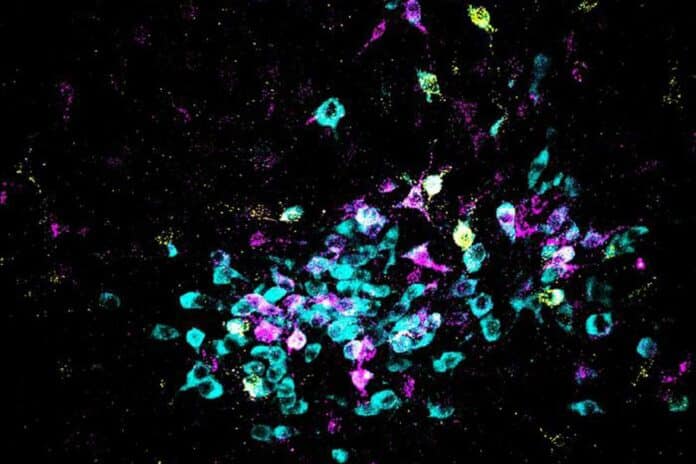Anxiety disorders are frequently brought on by traumatic experiences and are associated with a persistent feeling of fear. In many situations, the fear permeates many facets of daily life and goes beyond the initial trauma scenario. The overall quality of life and mental health may suffer as a result of this widespread fear reaction.
It has been unclear for most of the time what stress-induced mechanisms trigger our brain to create sensations of terror when there are no external threats. Researchers studying neurobiology at the University of California, San Diego, have now pinpointed the biochemical alterations in the brain and the neuronal circuitry responsible for this type of widespread fear response.
Atkinson Family Distinguished Professor Nick Spitzer of the School of Biological Sciences, Hui-quan Li, a senior scientist at Neurocrine Biosciences and a former assistant project scientist at UC San Diego, and their colleagues discuss their research findings on the neurotransmitters involved in stress-induced generalized fear in their report.
The researchers found that severe stress alters the chemical signals among neurons by examining the brains of mice, specifically in the brainstem’s dorsal raphe region. They saw a change in neurotransmitters, specifically from excitatory “glutamate” to inhibitory “GABA” neurotransmitters. Generalized fear responses are linked to this neurotransmitter switch.
Spitzer said, “Our results provide important insights into the mechanisms involved in fear generalization. Understanding these processes at this level of molecular detail—what is going on and where it’s going on—allows an intervention that is specific to the mechanism that drives related disorders.”
Expanding upon the finding of a neurotransmitter switch triggered by stress, which signifies a type of brain plasticity, the researchers examined the brains of people who had experienced PTSD after death. In these brains, they discovered a comparable switch in neurotransmitters from glutamate to GABA.
The researchers devised a strategy to stop the emergence of generalized dread. An adeno-associated virus (AAV) was introduced into the dorsal raphe of mice before subjecting them to severe stress to inhibit the gene that produces GABA. With this intervention, the mice were successfully kept from developing a generalized fear response.
Furthermore, giving mice the antidepressant fluoxetine (Prozac) right away following a stressful incident stopped the neurotransmitter flip that would have otherwise led to the development of generalized fear.
In addition, the researchers pinpointed the precise neurons in the dorsal raphe that control the transmitter switch and charted their connections to brain areas, including the lateral hypothalamus and central amygdala, which have been linked to various fear reactions in the past.
Spitzer said, “Now that we have a handle on the core of the mechanism by which stress-induced fear happens and the circuitry that implements this fear, interventions can be targeted and specific.”
Journal Reference:
- Hui-Quan Li, Wuji Jiang, Li Ling et al. Generalized fear after acute stress is caused by change in neuronal cotransmitter identity. Science. DOI: 10.1126/science.adj5996
